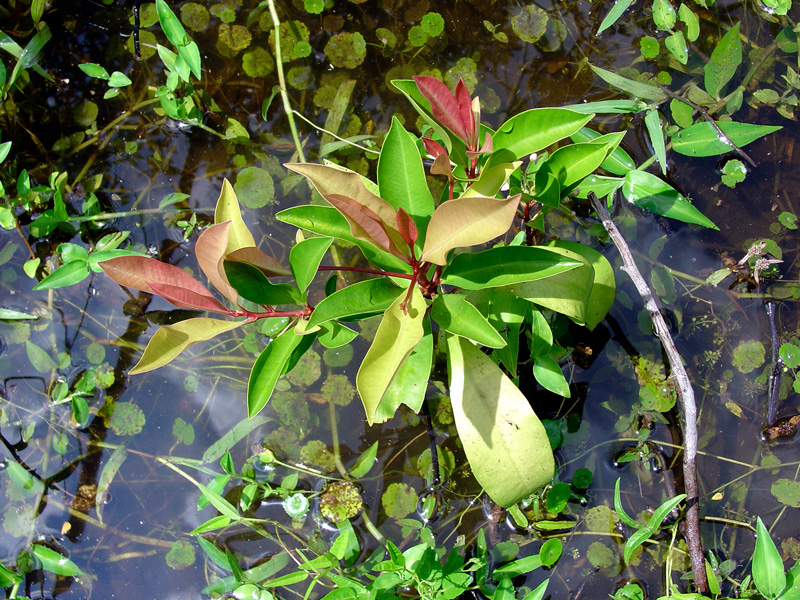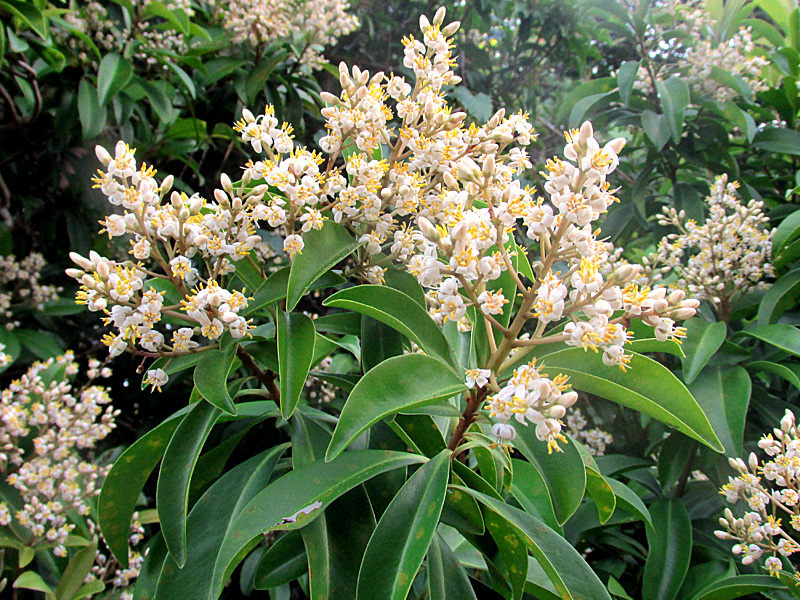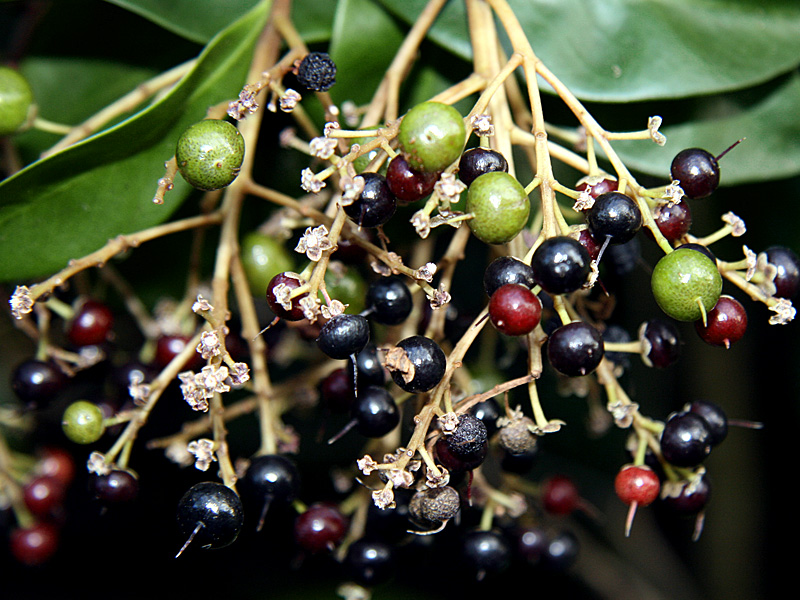
The Wednesday invasive plant control work team — Ken Gonyo, Diane Larue, Jean ‘JJ’ Romano and Susan Warmer — was very displeased to see a tall shoebutton aridisia (Ardisia elliptica) with fruit along Oslo Road as they walked with 2015 volunteer nature stewardship class, despite their ongoing and considerable efforts to control this Florida Exotic Pest Plant Council Category #1 invasive plant. Pictured above, shoebutton ardisia is shown with ripe black fruits and its distinctive new red leaves growing along with shiny-leaved wild coffee (Psychotria nervosa) at the upper right.
Below, this prodigious, year-round fruit producer — with lots of unripe fruits — is shown along with wild coffee leaves (at left)…
Its copious, very viable fruits often result in a carpet of seedlings …
The first time that I saw this plant was in the early 1990’s forming a monoculture along the banks of the St. Lucie River. It loves moisture.
About ten years later, we began to find it at the Oslo Riverfront Conservation Area, likely spread by birds. Its numbers have been much-reduced by the Wednesday work team. They hand-pull what they can, remove ripe berries, and treat the stems of large individuals with herbicide.
Take care not to confuse shoebutton ardisia with the related marlberry (Ardisia escallonioides), a hammock native. Both plants thrive in hammock shade or sun, thought shoebutton ardisia is more tolerant of soggy conditions.
New red growth is found only on shoetbutton ardisia. New marlberry leaves are green but its stems may have a brownish coloration, shown below flowering …
Marlberry fruits ripen from green to reddish purple to blue-black and are held in terminal panicles, which often hang down from the fruits of its marble-like berries …
By contract, shoebutton ardisia fruits ripen from white to magenta to blue-black and are held along the leaf axils. When in doubt, do not pull it out!






1 comment
Comments are closed.